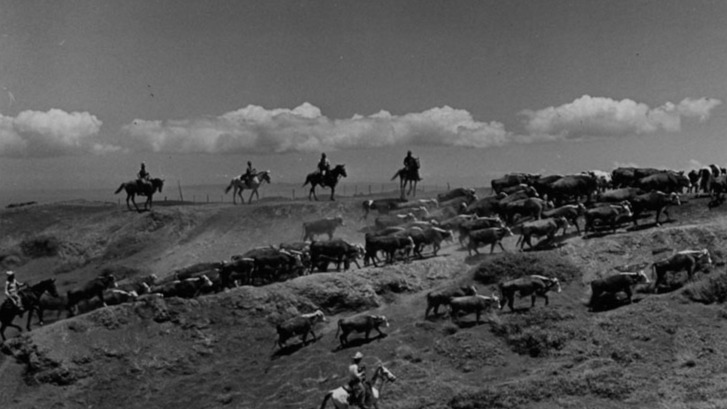
- Home
- Paniolo Hall of Fame
- Inductees
- James Kaleimaʻemaʻe Palaika Brighter

James Kaleimaʻemaʻe Palaika Brighter
Year Inducted: 2019
Molokaʻi Ranch | Moloka'i
Parker Ranch | Hawai'i
James Kaleimaʻemaʻe Palaika Brighter was born in Waikapū, Maui in 1871 to William Wadsworth and Elizabeth Edmonds. He ran away from home at age 14 and found his way by canoe to Molokai where he worked for A.W. Carter at Molokaʻi Ranch.
In 1899, A.W. Carter left Molokaiʻi Ranch to become a trustee for Parker Ranch. At leaving Molokaʻi, Carter brought three ranch hands to Waimea with him. One of the three was James Kaleimaʻemaʻe who, for personal reasons, refused to divulge his complete name. He used just his first and middle names only. It seems like he was forsaking any connection to the Edmonds surname. Carter offered to give him an English surname. He chose the name “Brighter.” Carter said that he felt it reflected the leadership qualities characteristic of young James Kaleimaʻemaʻe.
Upon joining the revered Parker Ranch Cowboy Gang, he was welcomed by the kamaʻāina folks for his quiet and industrious nature. The Hawaiian community especially respected James and “Hawaiianized” his given surname Brigther to “Palaika.” This name has endured and been a symbol for more than a century of James’ historic leadership in the cattle and horse components of Parker Ranch.
It was said that Palaika had qualities beyond cowboy life which included a certain spiritual power. He prophetically advised the Trustees by forecasting the weather and rainfall, as well as, settling social discord among ranch families in quiet private settings.
When World War I was looming, Carter anticipated the global need for cavalry animals, draft horses, pack and draft mules. Armed with this foresight, he made two strategic decisions. First, was to enroll Parker Ranch as a Remount Station that provided horses and mules to the war effort. Second, was to make Palaika the project leader for this effort, a move that would ensure its success. Carter knew that Palaika had an eye for a well-proportioned horse that embodied soundness, stamina, and good nature that were sought after by the military as well as plantations, and polo or racing enthusiasts.
Palaika was given full rein in his new role. He exploited the qualities of five remount stallions that covered more than 300 registered thoroughbred mares. Mule production in both pack and draft animals matched the cavalry needs exactly. He also had oversight of the Breaking Pen and the cow-horse program. This, at the time, was based on crossing Morgan stallions on thoroughbred mares to produce an early-day version of the American Quarter Horse.
Palaika left an indelible mark on the good reputation of the Parker Ranch horse. Ranch men of Palaika’s era extoled his many achievements. Nearly legendary is the story of a roping accident in Makahilinuʻu involving Carter. Palaika carried Carter to safety on his back for 5 miles.
The degree to which these two powerful personalities cared for each other and the special bond they shared, is reflected in the arrangements A.W. Carter made after Palaika’s passing in 1947. Carter arranged to have the Oʻahu contingent of the Palaika family, 24 of them in all, flown to the Big Island for Palaika’s funeral services.